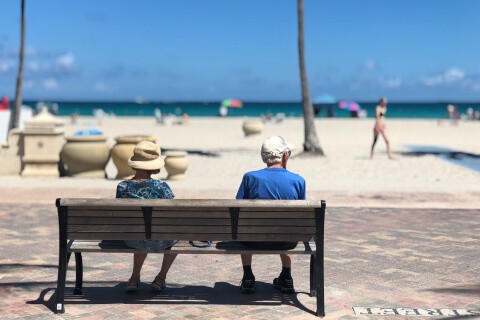The ‘cost of living crisis’ refers to the fall in incomes that the UK has experienced since late 2021.
What is the cost of living crisis?
The ‘cost of living crisis’ refers to the fall in disposable incomes (that is, adjusted for inflation and after taxes and benefits) that the UK has experienced since late 2021.
The government has responded to the crisis with several packages of support throughout this and last year. In 2022/23 household income support totalled £59.8bn.1 The latest updates on support were announced in the spring budget, including an extension of the Energy Price Guarantee (EPG) which caps the unit rate of gas or electricity at a more generous rate so that the average household will still face an annual bill of £2,500 until July. Despite this extensive support, household incomes are not keeping up with living costs and are not expected to return to 2021 levels in real terms until 2027.
Even so, household incomes are expected to increase by much less than prices over the next couple of years.
- The cost of goods increasing (some up 30%) more than the increases in household incomes (on average 5%)
- Import dirstruptions from Brexit, The Ukraine war and other global supply chains contributing to aditional costs
- To combat inflation, the Bank of England have increased interest rates
- With increased interest rates and record high house prices, the relative repayments on the average mortgage is higher than 20 years ago in relation to houshold incomes
- The COVID-19 pandemic caused a pause in spending that ended in 2021, inflation fell and rose again around the pandemic and the economies spending
How high is inflation?
Inflation is calculated as the average change in the price of typical goods and services purchased by UK households over 12 months. This is tracked using the Consumer Price Index (CPI), calculated by the Office for National Statistics using a sample of 180,000 prices of 700 common consumer goods and services. The latest data has the current CPI at 10.4% in the 12 months to February 2023. The Bank of England aims to keep the CPI rate of inflation at 2% plus or minus 1% (i.e. between 1% and 3%) and adjusts interest rates to achieve this.
How is inflation expected to change in the coming months?
Since inflation peaked at 11.1% in October the rate has been gradually coming down, although it spiked up a little in February 2023.
The latest forecasts from the Bank of England and the Office for Budget Responsibility both expect inflation to fall sharply this year, reaching around 3–4% by the fourth quarter of 2023. Both anticipate inflation will return to the 2% target by early 2024, although both forecasts also currently project an over-correction that leaves inflation below 1% until 2026.



